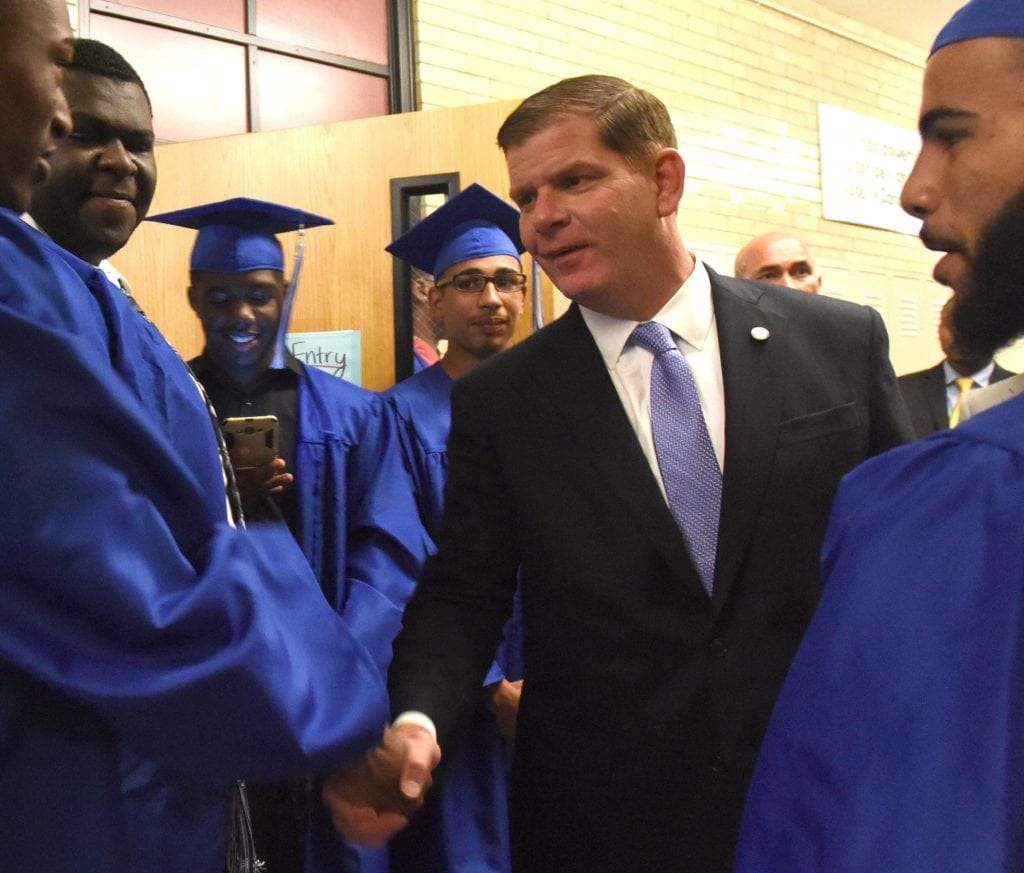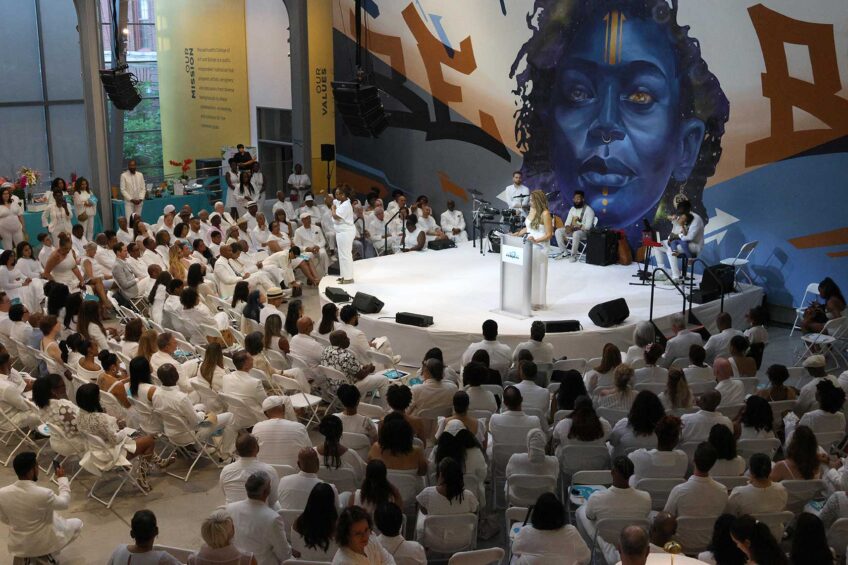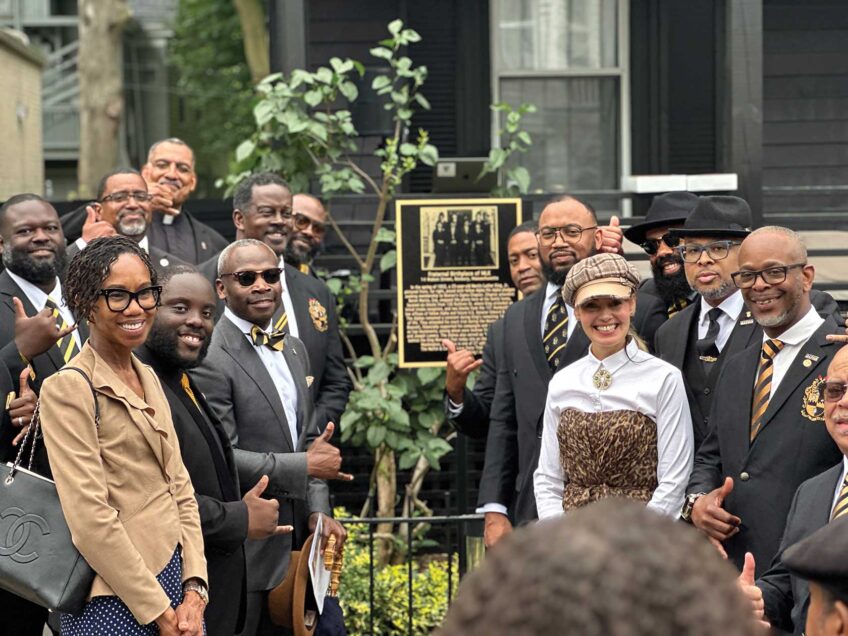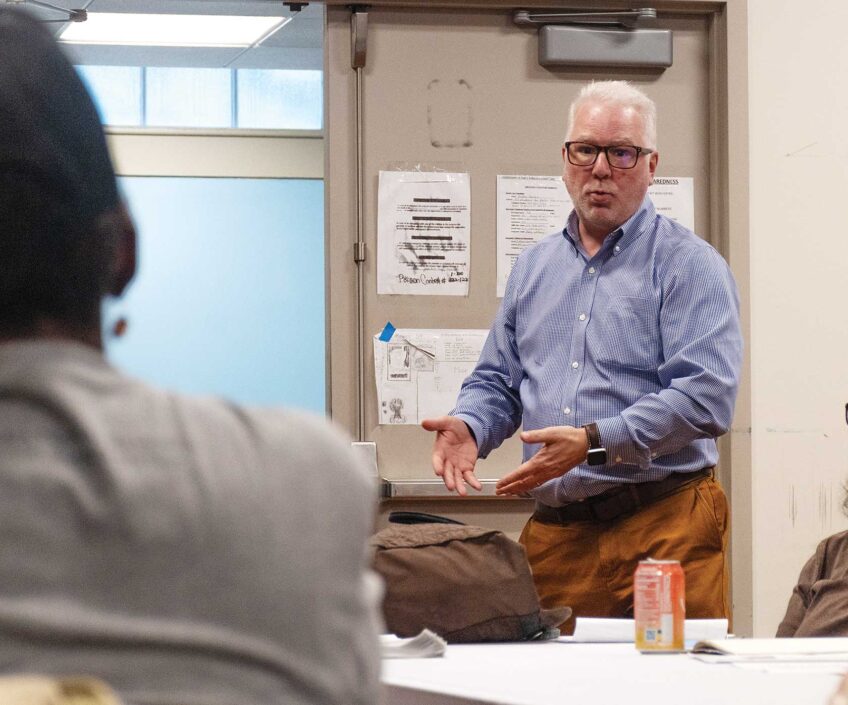
As we finalize the city’s operating budget for the 2017 fiscal year, I wanted you to hear from me directly about our investment in the Boston Public Schools.
Before I get into the numbers, let me be clear about my values. I believe deeply in public education. And I believe our unstinting goals in public education should be to close opportunity and achievement gaps, meet the diverse needs of every student, and make our district schools top choices for every family in every neighborhood.
My administration has worked closely with educators and families, as well as key community partners, on long sought-after initiatives, such as expanding high-quality pre-kindergarten, extended learning time, inclusive special education, wrap-around social services, 21st-century facilities, diverse school leadership, and pathways through college and into careers.
We have seen progress as a result, but we’re only just getting started. There’s a long way to go.
That’s the story behind the school budget for the 2017 fiscal year. Our proposal would launch new initiatives and strengthen existing ones with the singular goal of getting every student on a path to success.
But these investments add to a budget that has built up severe inefficiencies over the years — in transportation, in facilities, in personnel, and in operations. It’s a real challenge to get transformative new initiatives off the ground while undertaking structural reforms that in some cases could take years to unlock savings.
The alternative to this hard work, however, is not acceptable — and given our growing budget pressures, it will no longer be tenable. Each year that we focus only on meeting the growth in current costs, without making reforms, is a year we have to postpone transformative improvements.
Those who oppose these reforms — or who say these improvements should wait — are advocating for the status quo. It is a status quo where some 4-years-olds get the high quality pre-kindergarten that is proven to close achievement gaps, and others get nothing. It is a status quo where African-American and Latino children are disproportionately tracked away from the highest academic opportunities as early as fourth grade. It is a status quo that does not understand the more than 75 languages BPS families speak at home. It is a status quo where some Boston middle-schoolers get the shortest school day in the country. It is a status quo where students with disabilities do not get the support they need during crucial transitions into adolescence and adulthood.
It is not a status quo that I will tolerate.
That’s why we have proposed to increase the Boston Public Schools budget by $18.2 million over FY16, for a total annual investment of $1.032 billion in BPS. Since I took office, we will have increased BPS’ annual budget by $94 million. That expenditure is likely to grow when we reach a new contract agreement with our teachers.
We are justly proud of this investment. Our per-student expenditure is the highest of the 100 largest school districts in the United States, according to the U.S. Census. Looking back over the past five years, investment in BPS has increased much faster than other City departments, growing by 25 percent, while public safety departments grew by 20 percent, and all other departments grew by less than 13 percent.
These investments respond directly to the concerns and criticisms that have been expressed in the community about BPS for many years. It will bring our most rigorous curriculum to a more diverse set of students. It will ensure greater student safety, serve special student populations better than ever before, and introduce unprecedented operational efficiency, performance accountability, and long-term planning.
$6 million more will flow directly into school budgets through weighted student funding. $9 million more is being spent on Special Education and almost $3 million more is being spent in the school-based Bilingual/Sheltered English Immersion program. Staffing levels are expected to increase by more than 65, including 32 more teachers, even as enrollment is projected to be flat. We’re adding 200 new prekindergarten seats; a data system to improve parent access to children’s special education plans; and 33 new classrooms at 18 schools.
I look forward to working with the City Council to pass this budget and strengthen our schools.
The bottom line is: we are supporting the people and programs that are working well, and working equitably, for students in BPS. But I will not take the easy way out and expect the status quo to take care of all our kids, when we all know it has never done so.
There’s one more thing I want to address. The notion that we have a sweeping plan to close schools is untrue. The goal of our multi-year BuildBPS process is to create modern, inspiring learning environments for all our students. To me that means renovations, new buildings, and sparkling, creative new classrooms. That means further investment in our schools. If there is any consolidation it will be limited, consensus-driven, and designed to upgrade every affected child’s educational experience with logical grade configurations and predictable, easily navigated transitions.
On a related note, I want to debunk the premise behind rumors of widespread closures and other “secret agendas.” No outside audit, and no partnership with any reform organization, commits us to any course of action that is not supported by our community. Reports and recommendations are data points, not plans. We receive them with a critical eye and add them to the conversation if they prove helpful.
What carries much more weight are the conversations I have been having for years with parents, students, teachers, and education researchers about how to reach our shared goals. Based on this input, I’ve concluded that, rather than tinkering around the edges, we need to prioritize policies that will set up all our students and all our schools for long-term success.
The status quo has not been good enough. Every decision we make must be consistent with our values of full equity and real opportunity for every child in every community. I’m proud to say that has been the case and will always be the case as long as I am mayor.






